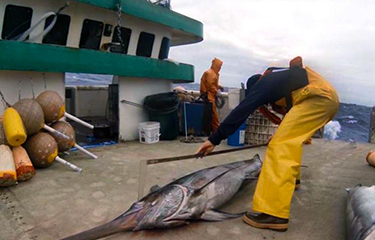NOAA Fisheries has awarded FLOAT Partners a five-year, USD 50 million (EUR 46 million) contract to oversee efforts to put observers on commercial fishing vessels in the Pacific Islands.
Under the contract, which is set to begin 1 September and continue into 2028, Hawai'i, U.S.A.-based FLOAT will recruit, supervise, and outfit fisheries observers as part of the Pacific Islands Region Observer Program (PIROP).
The program puts observers on all Hawaiʻi shallow-set longline swordfish vessels. It also places them on 20 percent of Hawaiʻi and American Samoa deep-set longline tuna vessels where they collect catch and bycatch data and record interactions with marine mammals and protected species.
FLOAT replaces Lynker Technologies, a Virgina, U.S.A.-based government contractor that received a USD 34 million (EUR 31 million) PIROP contract in 2018, as the PIROP overseeing body.
Lynker has worked closely with NOAA Fisheries on a number of projects, and both Lynker and FLOAT work together on conservation and management efforts, according to the companies’ respective websites.
Like many observer programs, some PIROP requirements were reduced or suspended for a time due to Covid-19 concerns.
In another effort to aid observers in their work, NOAA Fisheries is introducing tablet-based electronic systems to improve data gathering. In February, a West Coast Regional Observer Program official said that the PIROP was live testing the Onboard Record Collection Application (ORCA) 2 system in lieu of traditional pencil-and-paper data collection.
“Observers are good at their job, but there's a lot of possibility for transposition errors,” West Coast Region Observer Program Operator Charles Villafana said. “They go and type it into the computer, and they accidentally swap numbers or forget a number. Somebody must flag that error when we're doing analysis and go back to the paper and figure out where it went wrong. We’re trying to reduce the number of times somebody has to look at something, write it down, and copy it because we found that that seems to be where most of our errors [originate].”
Photo courtesy of NOAA Fisheries







